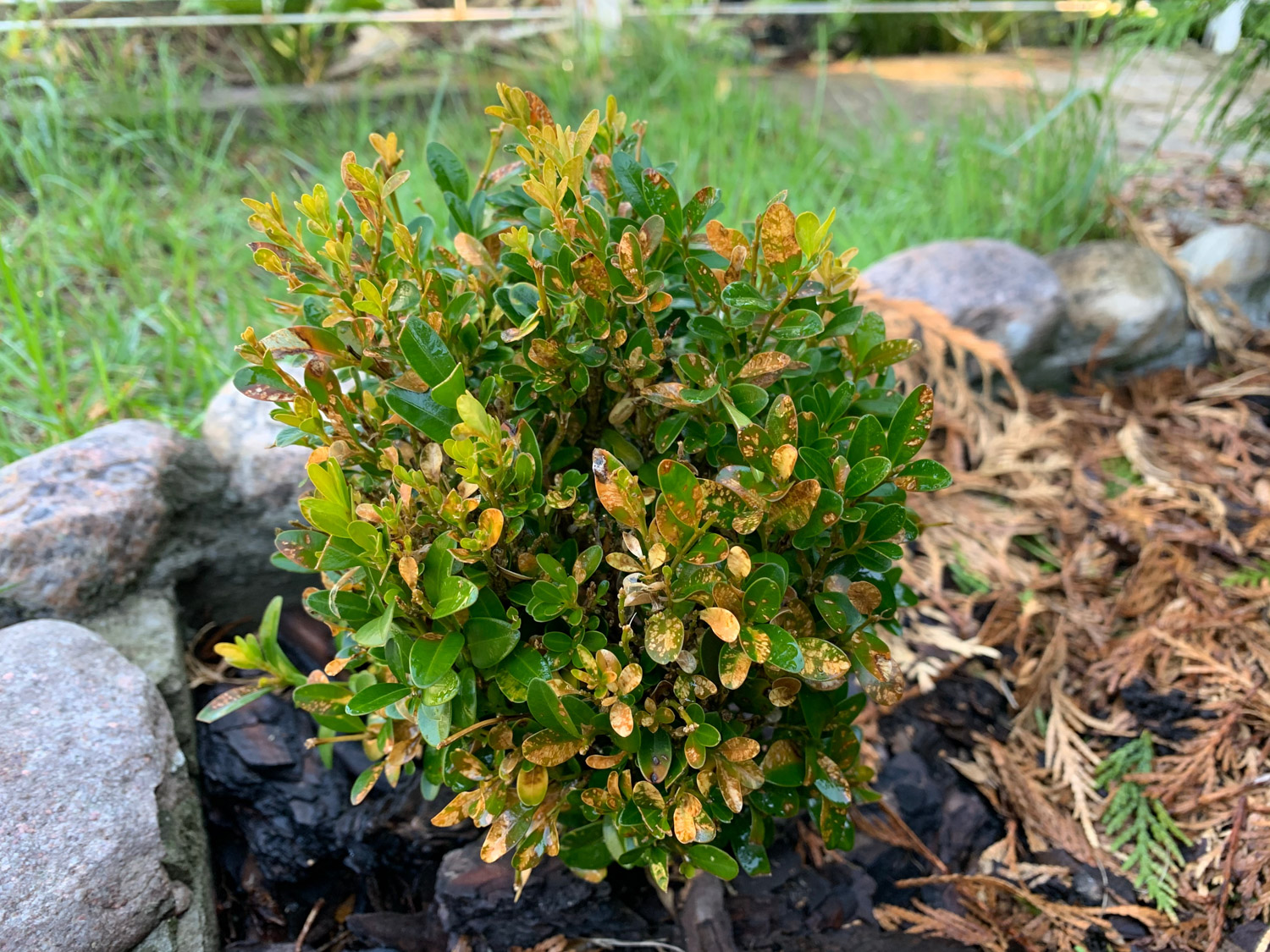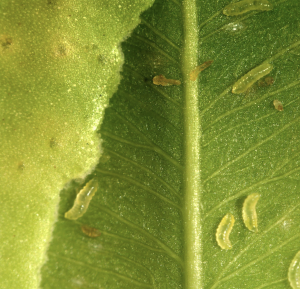
See all posts by this author
Why is my boxwood dying? Unfortunately this is a question we hear all too often. But there is good news.

Photo courtesy of Nancy Gregory, University of Delaware, Bugwood.org
Boxwood leafminers are one of the most serious pests of boxwoods. These small flies lay their eggs between the layers of boxwood leaves. As the larvae grow, they feed on the leaf tissue, creating blister-like mines. Infested leaves may turn yellow or reddish and might drop prematurely.
Of course, prevention and treatment for boxwood leafminers is included in a Plant Health Care subscription from Arborscapes. (As are myriad other pests and diseases) If you would like to become a part of our Plant Health Care program, reach out to Arborscapes today! Your living landscape will be the envy of the entire neighborhood!
For our friends who prefer to DIY, here are the best treatments and management strategies for boxwood leafminer:
Physical and Cultural Controls
- Pruning: Prune and destroy infested leaves or branches, especially in late winter or early spring before the adult flies emerge. This helps reduce the overall population.
- Selection: When adding new boxwoods to your landscape, choose cultivars resistant to leafminers. Examples include ‘Handsworthiensis’ and ‘Suffruticosa’.
- Monitor: Look for the blistered appearance on leaves, indicating the presence of larvae. You can also check for adult flies around the boxwoods in spring.
Biological Control
- Beneficial Insects: Some parasitic wasps are natural predators of boxwood leafminers and can help reduce their populations. Encouraging a diverse ecosystem around your garden can attract and support these beneficial insects.
Chemical Control
- Systemic Insecticides: Products containing imidacloprid or dinotefuran can be effective. Applied to the soil, these insecticides are taken up by the plant and affect the leafminers when they feed. It’s essential to apply these products after boxwoods have flowered to protect pollinators.
- Contact Insecticides: Sprays containing pyrethroids (e.g., bifenthrin or cyfluthrin) can target adult flies when applied during their emergence period in spring. However, contact sprays are less effective against the larvae inside the leaves.
Maintain Plant Health
- Healthy boxwoods are more resilient against pests. Ensure they are well-watered, especially during dry periods, and fertilize appropriately.
- Subscribing to an Arborscapes Plant Health Care program is the best way to ensure your boxwoods will always be vibrant and healthy.
Avoid Over-Fertilizing
- Excessive nitrogen can make boxwoods more attractive to leafminers and exacerbate the problem.
Regular Inspection
- Frequently check your boxwoods, especially during spring when adult leafminers are most active. Early detection and intervention are crucial for effective management.
While chemical treatments can be effective, integrating them with cultural and biological control methods will provide a comprehensive and sustainable approach to managing boxwood leafminers. Always follow label instructions when applying any pesticide and consider the broader ecological impacts, especially on beneficial insects and pollinators. The University of Florida has an in-depth article about boxwood leafminers that you can read here.
And if all of this sounds like too much work, contact Arborscapes to subscribe to our Plant Health Care program, and we will take care of this, other pests, fertilization and health concerns for your living landscape!
See all posts by this author
